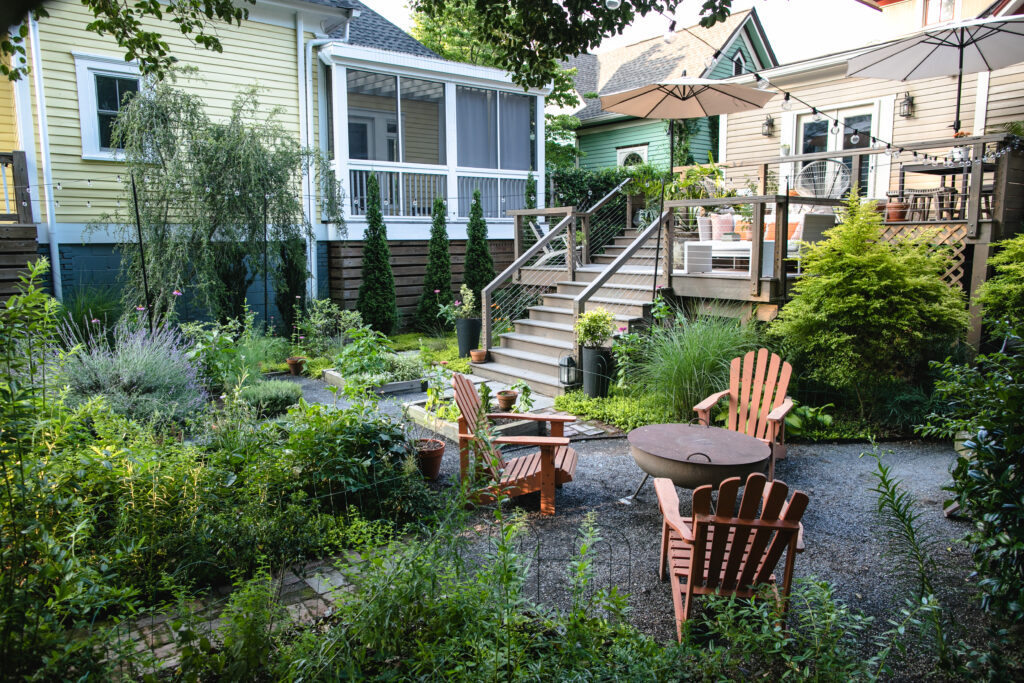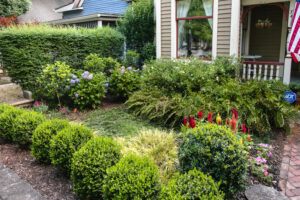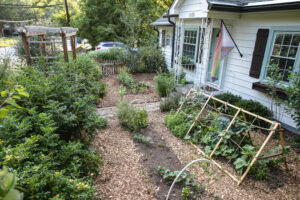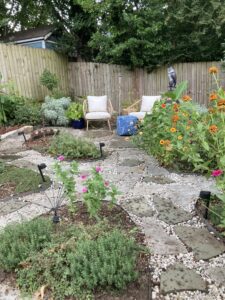In today’s world, where urbanization is rapidly increasing and space is becoming a premium, the idea of gardening may seem like a distant dream for many. However, the principles of permaculture offer a powerful solution: pocket gardens. These small, efficient, and sustainable garden spaces allow you to create a thriving ecosystem no matter how limited your space is. We believe that your garden can have a positive impact, no matter the size.
What is a Pocket Garden?
A pocket garden is a small, intensively cultivated space designed using the principles of permaculture to create a productive and ecologically balanced environment. The idea is to maximize the use of available space to grow plants that provide food, habitat for pollinators, and beauty, all while being beneficial to the ecosystem at large.
The Power of Permaculture in Pocket Gardens
Permaculture is a design philosophy that emphasizes working with nature rather than against it. It involves creating ecosystems that are sustainable, self-sufficient, and resilient. By applying permaculture principles to pocket gardens, you can create a space that not only looks good but also contributes positively to the environment.
Common Mistakes
The most common mistake folks make when designing small outdoor spaces is trying to scale a standard landscape design to suit a small space. This can show up in plant palettes and plant choices – choosing too many plants that will overcrowd and dominate a small space, or choosing species that will visually dominate. The opposite is also true! Choosing plants that are suited for big, sweeping spaces, such as trying to achieve a vast meadow that won’t have the desired result in a 10 x 10 garden.
A few expert tips:
Stacking functions through plant choices
Choosing plants that meet multiple functions or have multiple benefits within the landscape is a great way to have a big impact in a small space, from aesthetics to ecology to culinary! A good minimum is to choose a plant that fulfills at least three functions. A pollinator host plant that’s also beautiful and medicinal, like native Mountain Mint, or an evergreen, edible plant that also serves as a screen, like Bay Laurel. Stacking functions through plant choices creates resilience and a more layered landscape because the plants do more for you and the planet… plus you don’t need as many! Plan your plant palette thoughtfully with function in mind! Think about the benefits beyond the human experience and ask yourself questions like “what does this plant do for soil” or “what does it do for wildlife?”
Embrace microclimates
Each outdoor space, no matter the size, contains microclimates or varied, nuanced conditions that might require different attention: shady areas, sun patches, compacted soil, moist areas, and so on. Consider these microclimates when designing and planting in order to use the limited space in a small yard. Planting for microclimates gives you more variety of plants. Sochan loves partial shade and moisture and the leaves are edible, while many other edible fruits and veggies love full sun. Observe! Take a moment to observe the space and identify the microclimates. Also, think creatively about plant height, growth habits, and niches of varying plants to ensure that the microclimate where you plant them will support their health. A good practice is to consider the layers of a forest–from overstory and vine layer, to root layer and ground cover.
Constructed elements with a purpose
Using constructed elements like raised garden beds, trellises and paths in creative ways beyond their conventional purpose. Different landscape elements can serve more than one function in a small space. Raised bed planters can also divide spaces or provide seating. Privacy trellises can also grow vine plants like berries and grapes. Paths can also be a part of water infrastructure and help sink water down and divert water to rain gardens. Thinking about purpose when it comes to constructed elements means you don’t necessarily have to sacrifice functionality in a small space and you can get rid of redundancy in a really clever way. Think about how you want to use the space or solve problems with the design. Make a list of how you envision using your space and then draw connections by considering how one constructed element solves for multiple needs.
Getting Started with Your Own Pocket Garden
Creating a pocket garden is easier than you might think. Here are some steps to help you get started:
- Assess Your Space: Look at the available space you have, whether it’s a windowsill, balcony, or small yard. Consider factors like sunlight, wind exposure, and access to water.
- Choose Your Plants: Select plants that are well-suited to your environment and that serve multiple purposes. For example, choose herbs that can be used in cooking, flowers that attract pollinators, and leafy greens that provide nutrition.
- Prepare the Soil: Use high-quality organic soil and compost to ensure your plants have the nutrients they need to thrive. Consider using raised beds or containers if you’re gardening on a hard surface.
- Design Your Garden: Think about how you can make the most of your space. Use vertical structures like trellises, hanging baskets, or tiered planters to add more planting areas.
- Maintain Your Garden: Regularly water, prune, and mulch your plants to keep them healthy. Use natural pest control methods, like introducing beneficial insects, to keep your garden thriving.
Pocket gardens are a perfect example of how small actions can lead to big impacts. By applying permaculture principles to even the tiniest of spaces, you can create a garden that is beautiful, productive, and sustainable. Whether you’re an experienced gardener or just starting out, a pocket garden is a wonderful way to bring the power of permaculture into your life and make a positive contribution to the environment. Permaculture invites us to find the inherent worth in all things – this includes having only small amount of land. When you shift your perspective on even the foundation of your landscape, you open yourself to creativity and sustainability for your garden.




